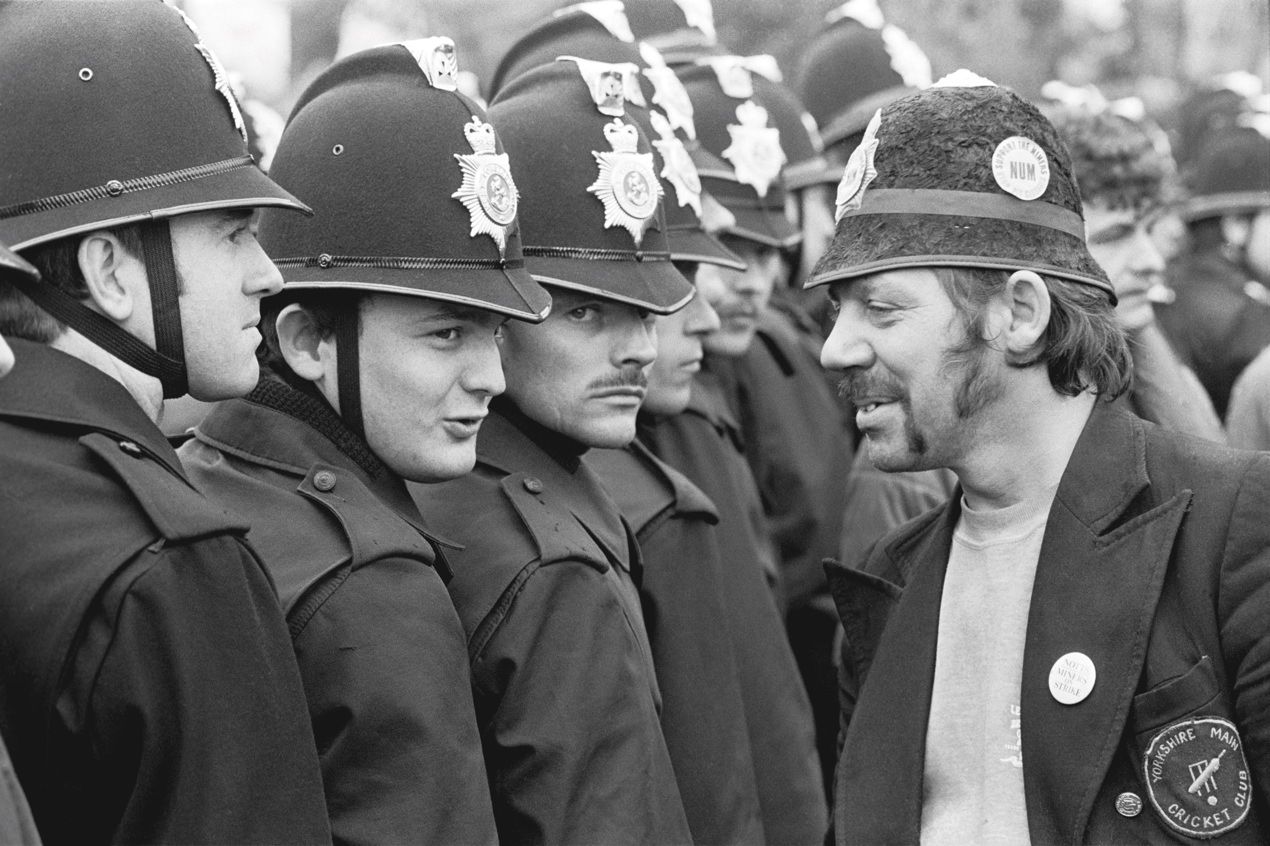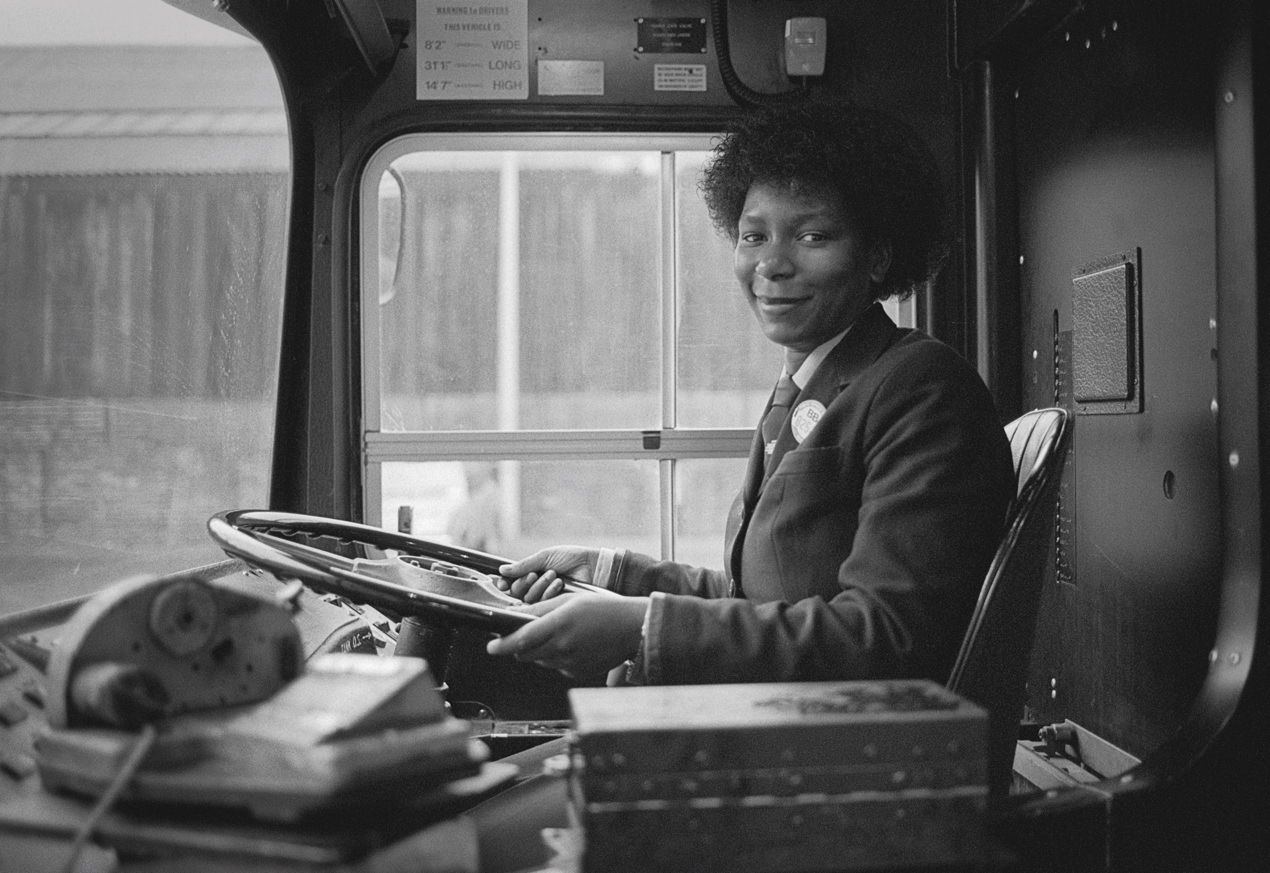Collectors’ items
Justine Jenkinson, daughter of acclaimed Sheffield photographer Martin Jenkinson, manages her dad’s archive and is putting together the first major retrospective of his work
For over four decades Sheffield-based photojournalist Martin Jenkinson (1947–2012) chronicled the drama and detail of everyday lives.
Jenkinson’s strong sense of social justice and equality was evident in his work. During the 1980s, he became known for his memorable photographs of British protests, widely published in the national press and trade union journals. He was the Yorkshire area NUM photographer during the 1984-85 miners strike, with his images including the arrest of Arthur Scargill and launch of the Women Against Pit Closures movement.
Who We Are, a new exhibition at Weston Park Museum in Sheffield, is the first major retrospective of Jenkinson’s work, bringing together over 80 of his most compelling images. It includes Jenkinson’s most well-known photograph, a miner wearing a toy policeman’s hat taken in 1984 during strike action at the nearby Orgreave coking plant.
This exhibition sheds light on Martin as a photographer. What was he like as a dad – and how did he shape who you are?
He was just a normal dad to me. I took for granted what he did as a photographer. It was a way of life for me living in a house with photographs pinned on noticeboards and walls. Also having to be careful about certain things like not running water when he was washing films from the darkroom because if we did the change in water temperature would destroy the film. I will always remember the smell of chemicals wafting down from his darkroom in the attic. He shaped me in a lot of ways but especially my views about social justice. This too was a way of life for me – he first began taking me on demos when I was a young child and I grew up attending the political events he was involved in.

Martin was born in London before making Sheffield his home. What was it about Sheffield that provided the ideal backdrop for his work?
Sheffield was a place where a lot of employment was under threat and there were many social issues that were regularly represented in Martin’s photographs, especially those that he was commissioned to take. While the variety of places that he lived, worked and travelled to were as important a backdrop as Sheffield, his affection for the city and its people is really apparent in the pictures he took here.
Sheffield was one of many things that shaped Martin’s work and style, but probably most important among them was his belief in the need for social justice. He felt like this from an early age, and through working in factories and manual labour before becoming a photographer, he saw the struggles for equality and justice first hand.
Although he began his freelance career in Sheffield, his interest in photography began before coming here. But in Sheffield in the late 1970s and early 1980s, the changes in the steel industry and what was happening in the pits in the region were making national headlines, which meant that Martin’s professional work and personal beliefs came together in a way they perhaps hadn’t before.
What’s great about Martin’s work was the way he developed his own style across the many different types of photos he took, whether it was something he might see on holiday or out and about. He had a great eye for the interesting, unusual or artistic potential of an image.
How do you hope Martin’s images inspire future generations of people fighting for social justice?
Many of Martin’s images depict struggles that are still going on today – for example in the NHS, poverty, unemployment and the workforce. His images are a testament to the strength of people working together. I hope they inspire people to keep campaigning and to see that these issues must not be forgotten or sidelined.
What images do you think Martin was most proud of?
Martin was most proud of the images that portrayed an important moment in time that otherwise might not have been recorded, especially if that image inspired others. Martin’s most famous image, of the striking miner in the toy police helmet, is a great example of this. It captures what was happing at the time in such a unique way, and I think that’s why it resonates with so many people.

Leave a reply
Your email address will not be published.